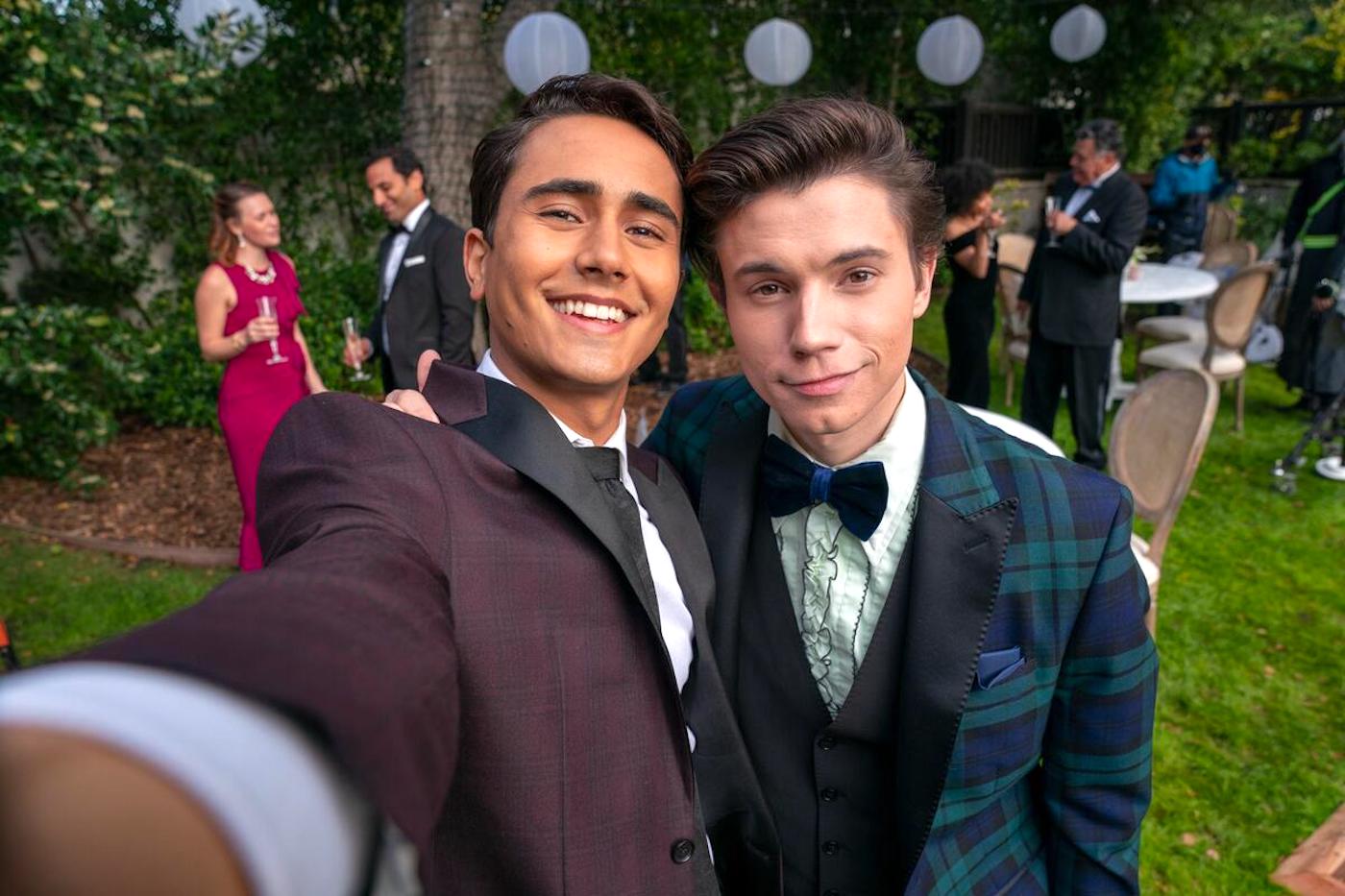JP Wakayama’s first network series, Love, Victor, is top-in-class with the help of Guild mentor Yasu Tanida and a think-on-the-fly production team.
by Pauline Rogers / Photos Courtesy of Hulu
Season 2 of the Hulu original series Love, Victor (based on the groundbreaking movie Love, Simon) continues the story of Victor Salazar (Michael Cimino), a half Puerto Rican, half Colombian American teen living in Atlanta. While Season 1 focused on Victor’s journey of self-discovery, his challenges at home and a struggle with his sexual orientation, Season 2 deals with the repercussions of Victor’s coming out, as he navigates friends old and new and a fresh relationship with a possible love interest, Benji Campbell (George Sear).
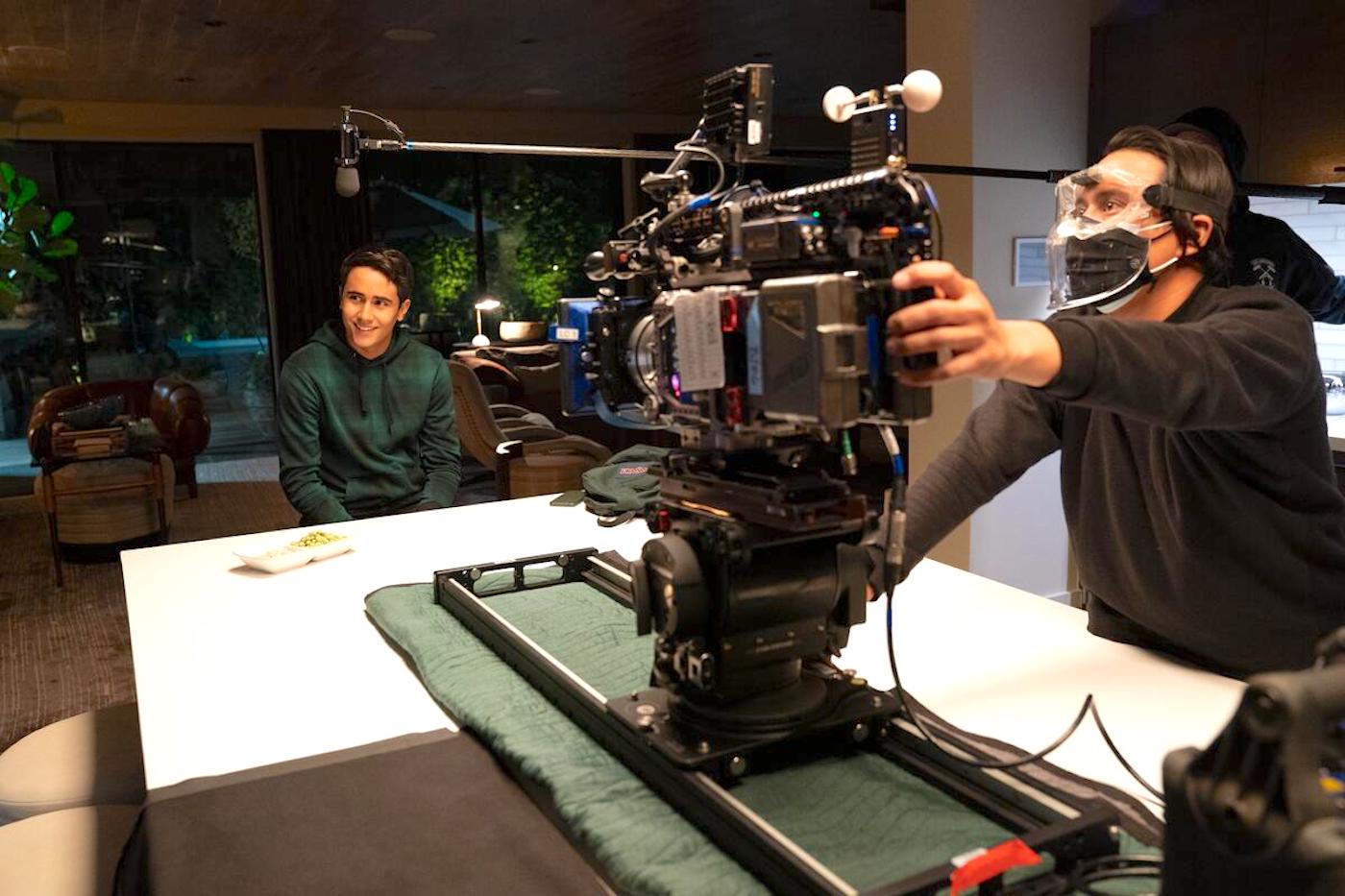
When circumstances changed and Guild Director of Photography Mark Schwartzbard moved on after Season 1, Production looked for a fresh pair of eyes. As incoming cinematographer JP Wakayama describes: “My mentor, Yasu Tanida [ICG Magazine February/March 2019], referred me to producers Issac Aptaker and Elizabeth Berger. I had tremendous respect for the quality of storytelling and character development during Season 1, and the entire creative team wanted to push that further in Season 2. I quickly aligned with EP/Director Jason Ensler’s vision, and producer Shawn Wilt provided me with the resources and a wonderful crew to accomplish an ambitious season during the pandemic.”
For Wakayama, Love, Victor stands out with its quality of writing “and an amazing set of unique characters that each have their own rounded vulnerability and complexity. I love how the show explores each of these storylines with its arc and truth. It creates layers and depth that feel incredibly real and that audiences ultimately can relate to.”
One of the things that excited Wakayama was that Production decided to carry the first-season camera crew into the second season, giving him experienced talent familiar with this unique show but also a group open to growing the look to fit the story.
“Having a tech crew that supports you is critical,” he insists. “I’ve known Chief Lighting Technician Adam Uyemura since high school, and he knows my sensibilities in terms of light. We have refined our workflow over the years and park our Inovativ carts right by each other, and we both monitor the image separately and give notes via wireless coms. He can then tweak all lighting remotely during the shot if something isn’t working out. It speeds up the process and gives the director more shooting time.”
Wakayama adds that “with A-camera 1st AC Chris Geukens returning from Season 1, he gave me a lot of insight, which helped me navigate the show as well as build and curate our camera package. Camera operators Joseph Hernandez, who also flew Steadicam for us, Yvonne Chu, and Justen Hernandez were also crucial members of the team on the front lines in masks and face shields, able to find the best frames to tell our story and build great relationships with our cast – with big support from B-camera firsts Cameron Carey and Brian Wells. That seasoned team knew the show but was also open to changes.”
The team brought in B-camera 1st ACs Brian Wells and Cameron Carey, A-Camera 2nd AC Genna Palermo, B-camera 2nd AC Loren Azlein, and Conner Daniels as Loader and Onyx Pearl Morgan as Digital Utility to round out the crew.
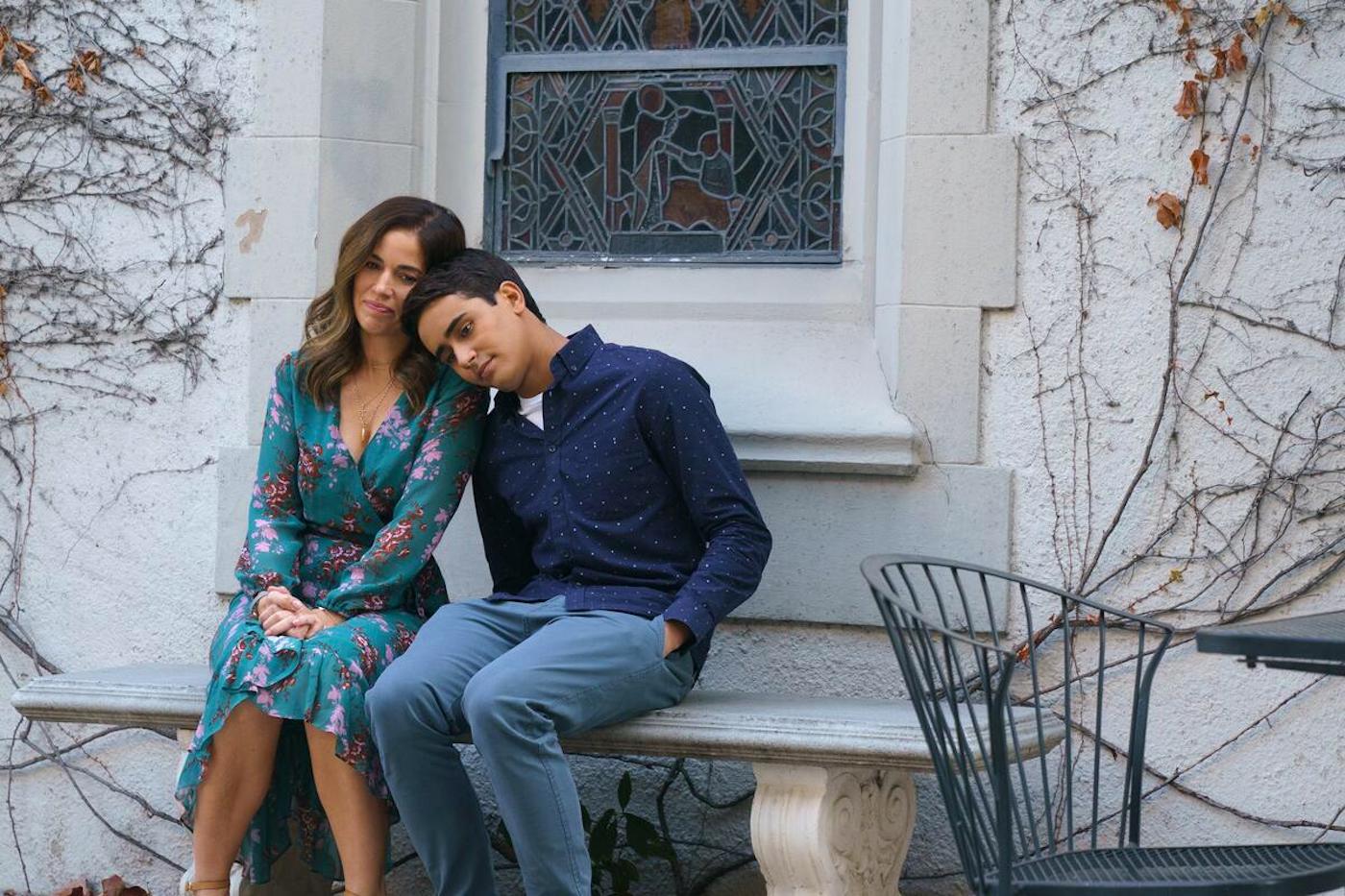
With the team in place, Wakayama began to explore that growth with Geukens. “It can be difficult taking over a show; trying to keep it in the same world while putting your spin on it,” Geukens offers. “JP did an exceptional job of keeping it grounded in the look of Season 1 while growing it as our characters’ stories progressed.”
The two decided to shift the look from slightly dreamy to a more grounded real-world approach. There was talk of moving to the ALEXA MINI LF, “to help differentiate the seasons while keeping the same tone and color provided by the ALEXA sensors,” Geukens recalls. “But we ultimately chose to keep our camera body the same as Season 1, ALEXA Mini shooting 3.2K ProRes 4444 XD framing for a 2:1 frame line,” explains Wakayama.
What did change was the lenses – an addition to the Panavision SS, US, and ZS series detuned by Dan Sasaki. “The camera tests introduced the team to the new prototype spherical lenses designed by the special optics group,” Wakayama adds. “In the end, we went out with two sets of the prototypes and a few SS/US series primes. We can’t thank Panavision’s David Dodson enough for helping us get those lenses onto the job. I think we were one of the first series to take those lenses out for a long stretch of time.”
Wakayama says Season 2 relied heavily on “our show LUT and lensing. I worked early on with final colorist Kris Santa Cruz at SIM International to create a production LUT that got us close to the direction of our final color. I love to spend time early on perfecting this so I can be bold on set and light to it in terms of contrast and color.
“Adam Uyemura and I calibrated our light meters to our show LUT, so we knew where things would fall,” he continues. “Without a dedicated DIT, I had to keep my eye on exposures and color balance for every shot – and having one show LUT throughout gave me the ability to adjust color temps in camera. As a result, every director/producer would see on set a close version of what the dailies would look like the next day.”
Wakayama intended to push for a cinematic look and a formal shooting style. “I strive to ground the cinematography in story and character and not draw too much attention to it – to let the actors do the work,” he explains. “I love to add mood when a scene is calling for it, and this was done primarily with lighting and framing, but it’s always motivated by what the actors are experiencing. There is subjectivity within those moments that we wanted to explore and give the audience access to that vulnerability.”
Uyemura and Wakayama decided to start from scratch in terms of lighting. “Knowing a large portion of my budget would go to stage set exteriors, we decided to keep the stage rigs simple/flexible,” Uyemura recalls. “Instead of going the traditional tungsten route, we opted for 18K HMI bounces from the ground and used M40s on truss for directional, hard light. Using fewer units, we could light with about 70 percent of the Season 1 budget, gain a couple of stops of output, and start with a more favorable daylight color balance. Interiors were mainly lit with practicals and supplemented with SkyPanels, L series, and LiteMat.”
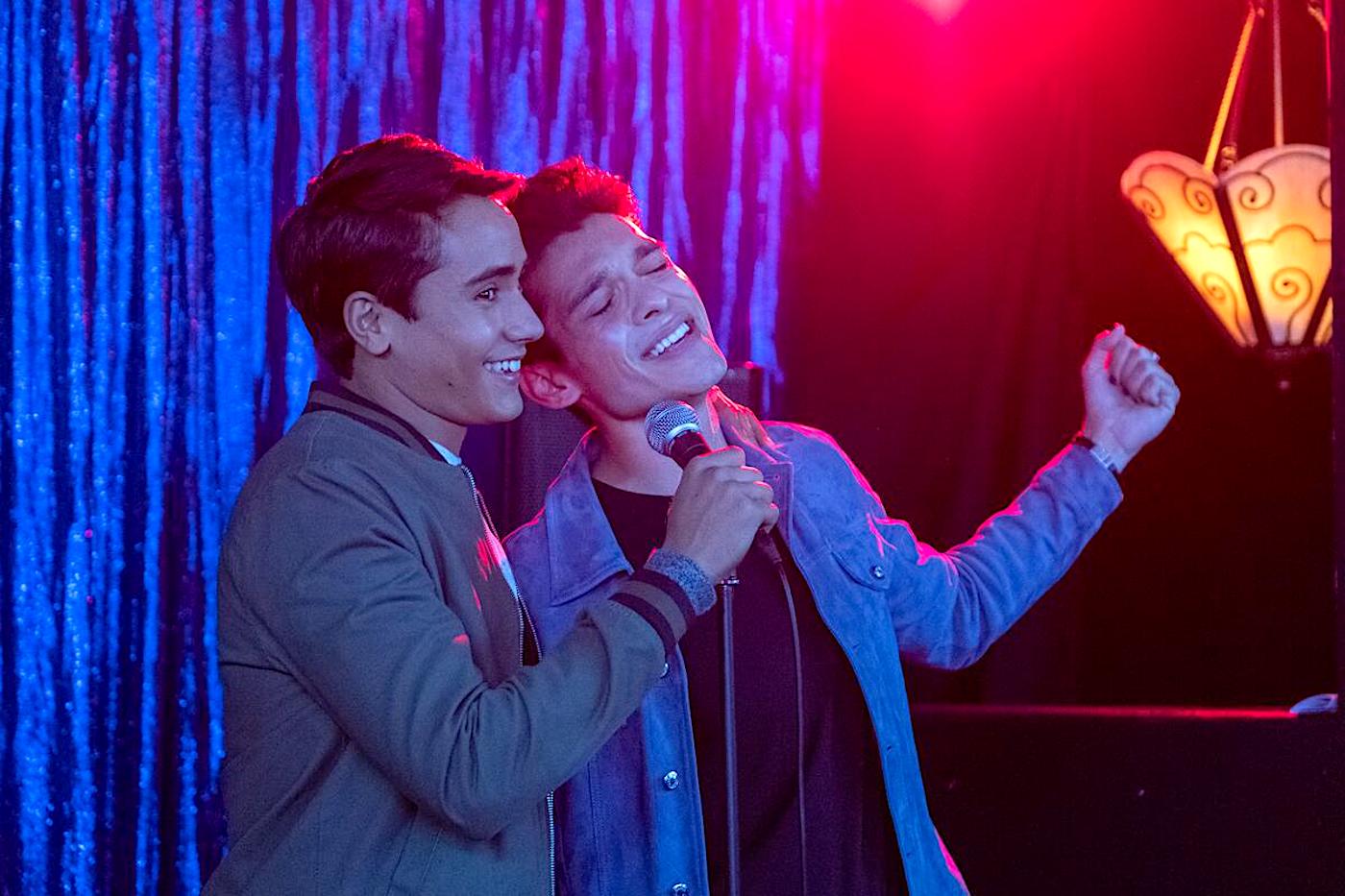
Time was key to making this second season work. “With limited time with our rigging crew, all tweaks during the season had to be made with set lighting, so we worked with Key Grip Randy Tambling to rig big overheads out windows for HMI units from the floor that worked double duty, creating a north light ambiance into the set and lighting our backings,” Uyemura continues. “We would supplement any hard sun by direct 4K’s wearing orange to create further color separation.”
For night work, the decision was to motivate from interior practicals, with the occasional moon or sodium vapor through windows depending on the side of the apartment they were looking at in relation to the actual location. “We tend to like our practicals played brighter and to light the scene rather than dimming them down to unrealistic levels and supplementing with units overhead,” Uyemura notes.
COVID added a bit of a complication in this interior setup. “We had to have flyaway ceilings and as much air ventilation as possible,” Wakayama explains. “Without natural bounce-back from ceilings, we battled falloff and contrast deeper into the rooms. For this, we extended daylight motivated from the windows using wireless controlled SkyPanels s60 through an 8-by-8 T-Bone with light grid. We always tried to keep the wrap minimal and make it feel like a natural bounce-back. COVID rules also excluded the use of atmosphere, so we generally wore a Tiffen Low Contrast filter in the box to bloom highlights and add a touch of atmospheric feeling to the room.”
“During the COVID peak, I’d say the number-one most beneficial thing was the use of wireless DMX 100 percent of the time,” Uyemura states. “The guys could set lights or make adjustments and immediately walk away. From there, we had full control outside, at our carts. That drastically reduced the amount of time we had to be in the bubble on set or close to cast and other crew.”
COVID impacted the choice of gear in other ways. “To keep people distant, we made heavy use of the Teradek Serv Pros to allow those who needed to see a monitor to watch from their devices,” Guekens adds. “We also used a ClearView Flex provided by Sohonet to allow for encrypted live streaming of all cameras to anyone working off-site. It was great to be able to work in real-time with the writers’ room and VFX team without their having to wait through the COVID testing cycle needed to physically come to set.”
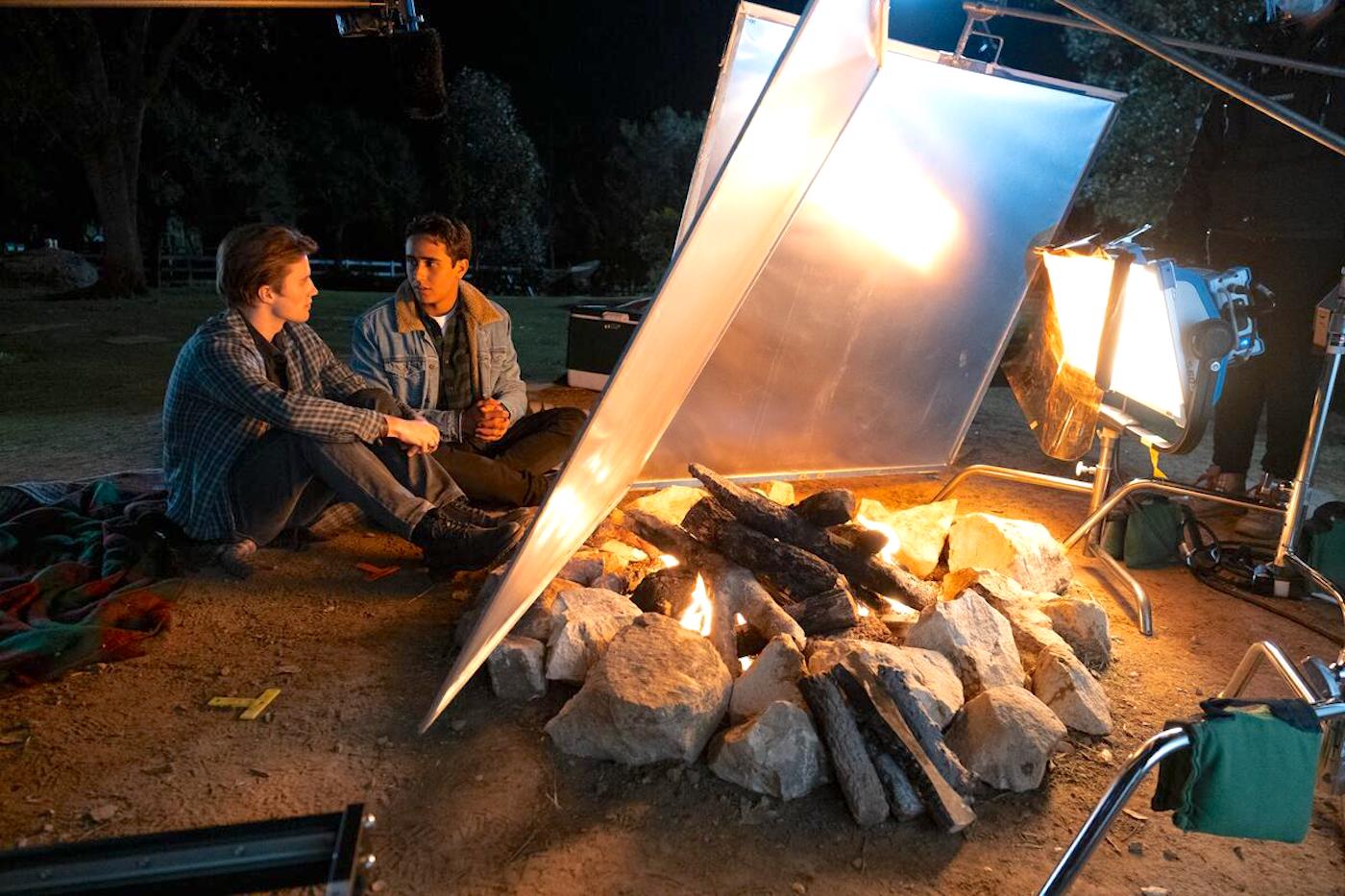
Although COVID was always in the back of everyone’s mind, the Love, Victor team tried to “grow” the story thematically and visually. So, now that the arduous Season 2 is behind them – and the crew can look back – what stands out?
Wakayama’s first thought is Episode One, where Rachel Hilson’s character Mia gets takeout from a Chinese Restaurant and runs into her love interest, Andrew (Mason Gooding). “For scheduling, it was best to recreate the street scene on the studio lot,” Wakayama recounts. “We utilized FOX’s famous New York street built for the 1969 film Hello, Dolly. Production Designer Cece De Stefano and Art Director Elizabeth Newton assisted us with adding neon signs and outfitting surrounding storefronts with practicals to use as a base, and ACLT Noah Cruz worked with Adam [Uyemura] to devise a plan for a 65-foot Condor wearing an S360 and an S60, both controlled wirelessly for our backlight washes, assisted by a generous wet-down of the street. Locally, we wrapped and extended practicals using a 12× shoot-through and S60 through 4×4 for close-ups.”
The DP says he opted for studio mode instead of Steadicam to maintain a more formal frame and laid dolly track for the final movement that brought Mia from the sidewalk around to her car to finish the scene. “The idea was to keep the movement specific and minimal, allowing Rachel Hilson to guide the audience with her performance and anxiety for this public encounter with her ex,” he explains.
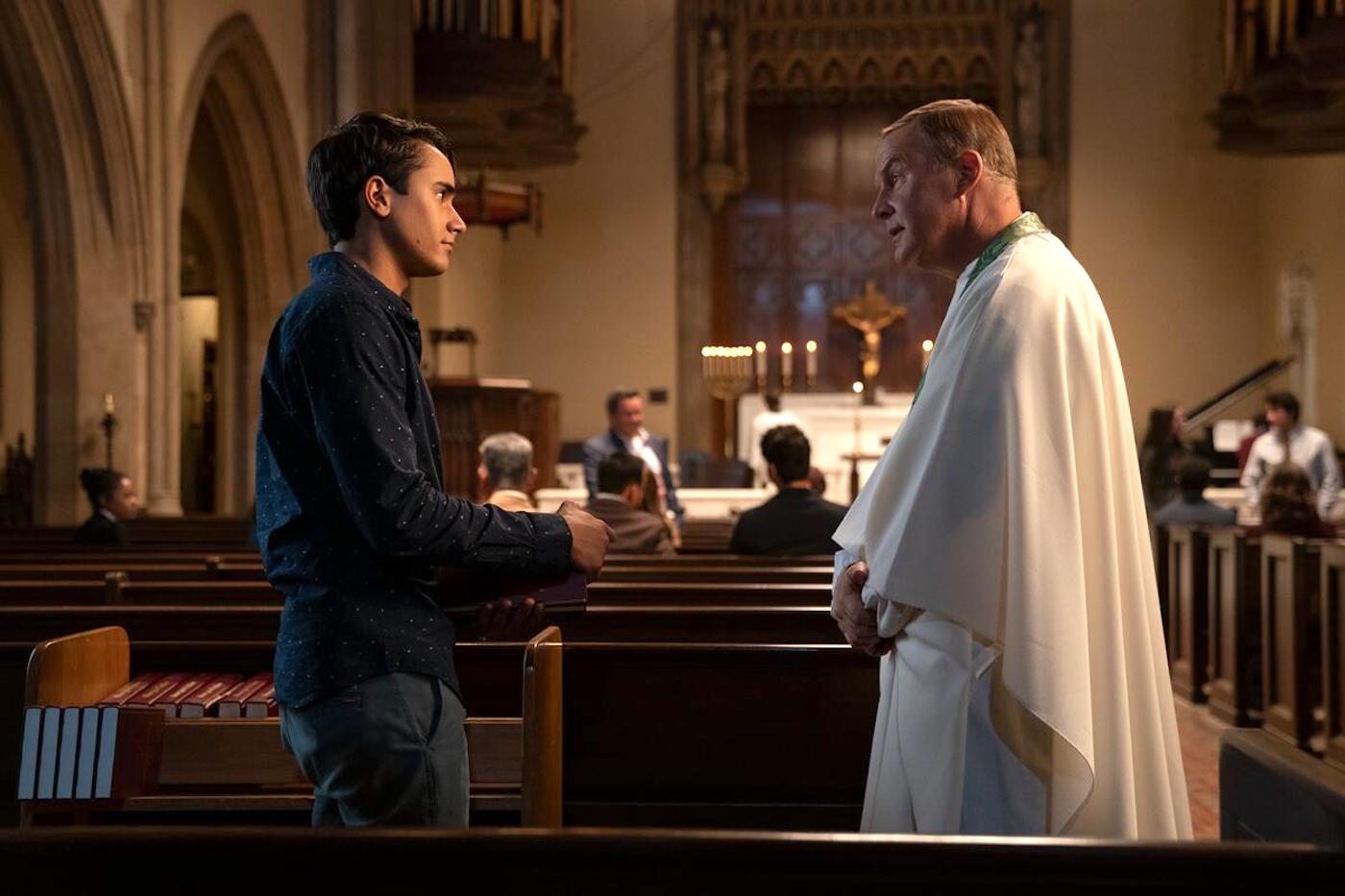
Locations were always fun. Take the big turning point for Victor, who accompanies his mom to church to listen to her lead the choir. “We were at St. James Episcopal Church in Koreatown, and we had a lot of material to cover,” Wakayama remembers. “To assist with logistics, we lit the scene with two 4K tungsten units inside a 7-by-14-foot overhead tubular balloon and brought in textures through stained glass with S60s and M18s. It was a subjective moment for Victor, and we needed to be physically close to him with the camera while also allowing ourselves flexibility with movement and coverage. Randy [Tambling] secured a Chapman MiniScope 7 operated by Joe [Hernandez] to achieve the whole scene in just base positions. Joe is a problem solver and can adapt very quickly. I welcomed his creative input and trusted his sensibilities regarding framing ideas and shot workflow.”
Scheduling restrictions often inspired creativity, such as for an added night-driving scene in the season finale in which Andrew drives Mia to see her mom. “We did poor-man’s process outside our stage and keyed with a mix of Astera Titan and Arri SkyPanels programmed in a chase by Adam [Uyemura],” Wakayama explains. “Adam was able to pre-program a few sequences and could play with them live. We slightly misted the windows and added distant city lights using a horizontal pipe rig on a lateral dolly. The rig carried Titan tubes that we blacked out and carefully cut pinholes in various locations to give us some bokeh flavor.
“It was one of those scenes we added onto the end of the day,” he adds. “A-camera worked off a jib for correction and subtle movement while B-camera Operator Justen Hernandez framed three-quarter shots along the hood. We finished in time to make our day.”
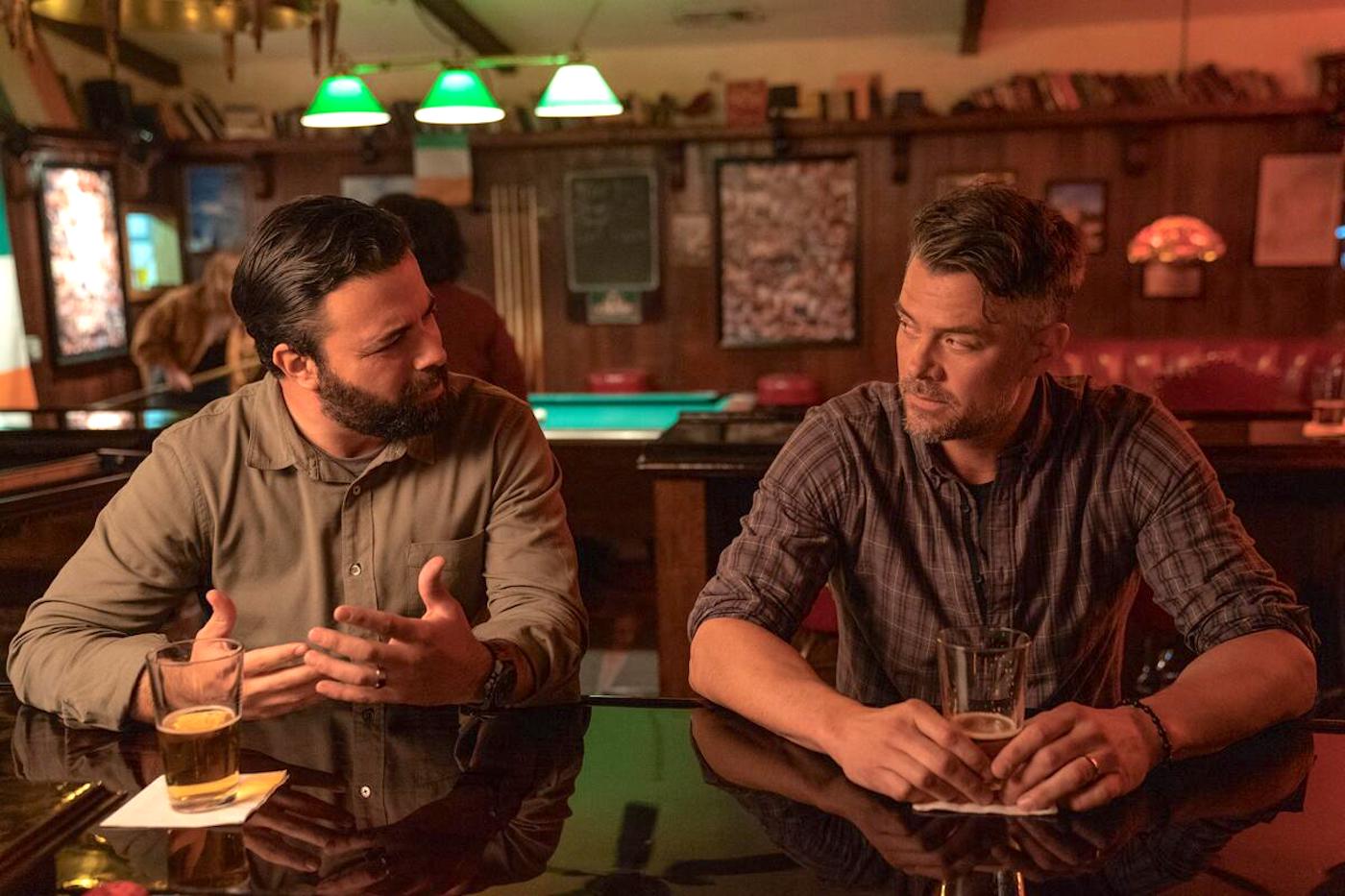
How could a story about a young man navigating high school not touch hallways, classrooms, or the schoolyard? Operator Yvonne Chu says she always liked “shooting the dance/band/basketball scenes. I like being able to run around with the camera and find shots. The basketball scenes were especially fun and difficult. You’re always trying to get in there to get the shot, but at the same time, trying not to get hit by the players or the ball. Michael (Cimino) ran into me (while hand-holding the camera) once. Luckily no one was hurt.”
Wakayama says they tried to approach the basketball work by “tracking our main character’s progression through the scene while also featuring the dynamics and chaos surrounding us. We had two main setups that we utilized. The first was a long dolly track along the whole sideline of the court that carried both dollies and cameras tracking different action on our Panavision zooms. The second was a mixture of Steadicam operated by Joe while B-camera, operated by Yvonne, was adding a controlled head vibe to catch beats of Michael gaining confidence and being supported by his teammates.”
For Chu, there’s one scene that illustrates the enormous trust the Love, Victor camera team shared. “It’s when Armando meets Simon’s dad at a bar,” she explains. “The director and JP had me set up this alternate wide down the bar, and while I was setting it up, I noticed that there was a reflection of their torsos in the bar. I knew if I got the lens at the right height, I could get their faces in the reflection.” Wakayama smiles, noting, “I love utilizing B-camera for opportunities on the days that weren’t shot-listed or conceived in prep. I leaned on Yvonne to help me improvise these moments that add depth, texture, and mood.”
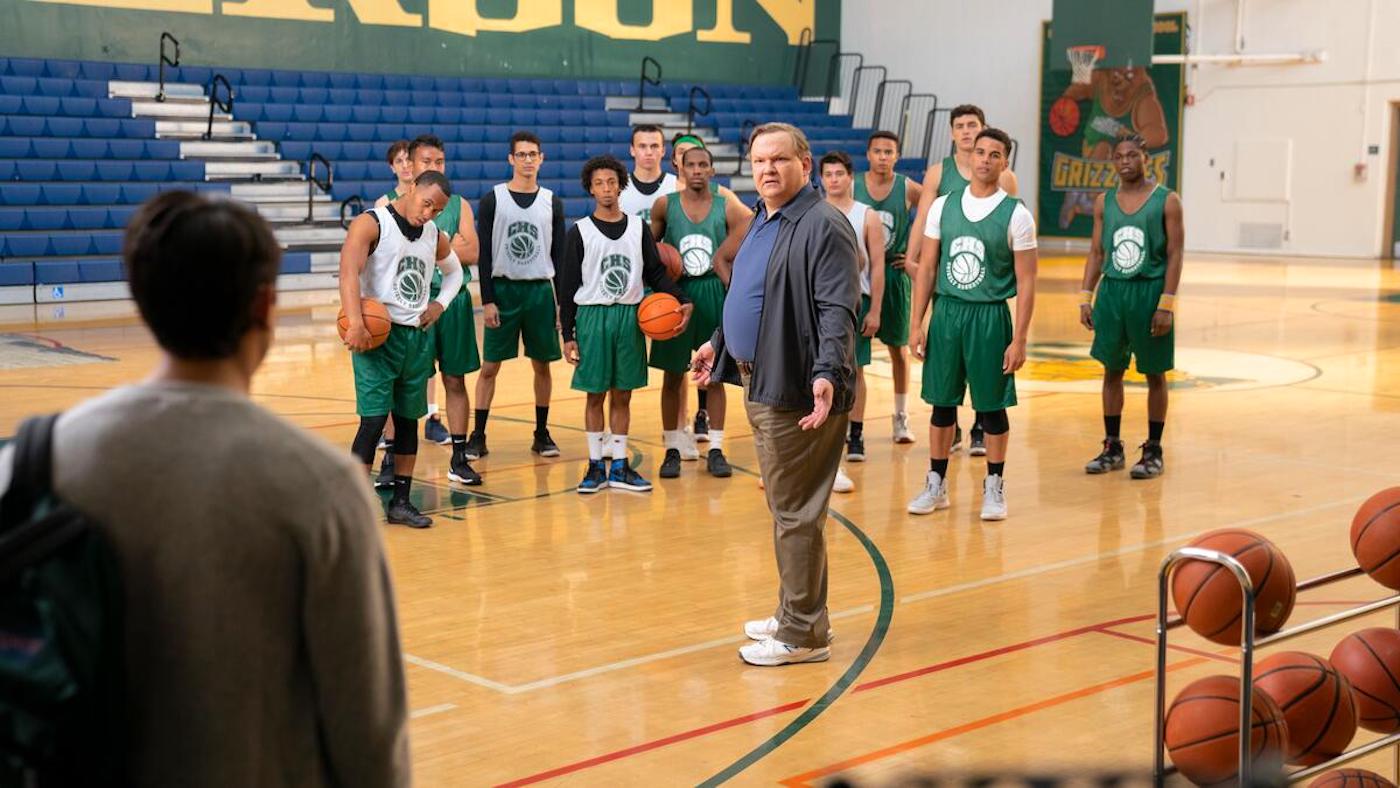
The mention of a bar scene spurs Geukens’ memory. Victor takes Rahim (Anthony Keyvan) to a gay bar, much like how Victor was taken by Simon’s friends in Season 1. “Our director, Kevin Rodney Sullivan, had a clear vision for the camera blocking in that scene,” Geukens recounts. “All of the light in the room came from LED tubes rigged as practical fixtures, allowing us to see almost the entire bar in the opening shot and move quickly for the coverage on Steadicam. The karaoke portion was done mostly with a Chapman Miniscope that allowed for some great camera movement within the small practical set.”
“I’m excited any time our characters explore locations outside of our school environment,” Wakayama adds. “In this case, we were experiencing a first with Rahim, and we wanted to bring the audience along for that journey. We treated the karaoke as a performance but maintained a subjectivity of the two bonding over the song.”
Love, Victor’s season finale is key to the story arc, and the team needed to pull it off with as much creativity as allowed. “It’s where Victor attends a wedding for Mia’s father and has an epiphany about his relationship and who he wants to be with,” Wakayama explains. “He runs from the party at night through neighborhood streets and ends up at an unmarked door of the person he chooses, a cliffhanger for Season 3.”
The Guild camera team accomplished the sequence in a series of shots, using different locations over a week of shooting. “We used an e-car with Joseph Hernandez operating Steadicam for running shots and a Moviebird 35/45 for a sweeping shot of Victor running over a train bridge,” Wakayama describes. “The producers wanted to leave Victor’s choice open to interpretation, so we purposely threw any reference to backgrounds out of focus and lit the scene in a way that wasn’t specific to which house he was at.
“It’s so fun when the fans create online videos and blog posts about their theories of Victor’s choice,” he adds. “One of the most enjoyable things about working on the show is its community of fans. I believe that positive response is due in part to the amazing writers, producers, talent, and my crew – who bring this show to life.”
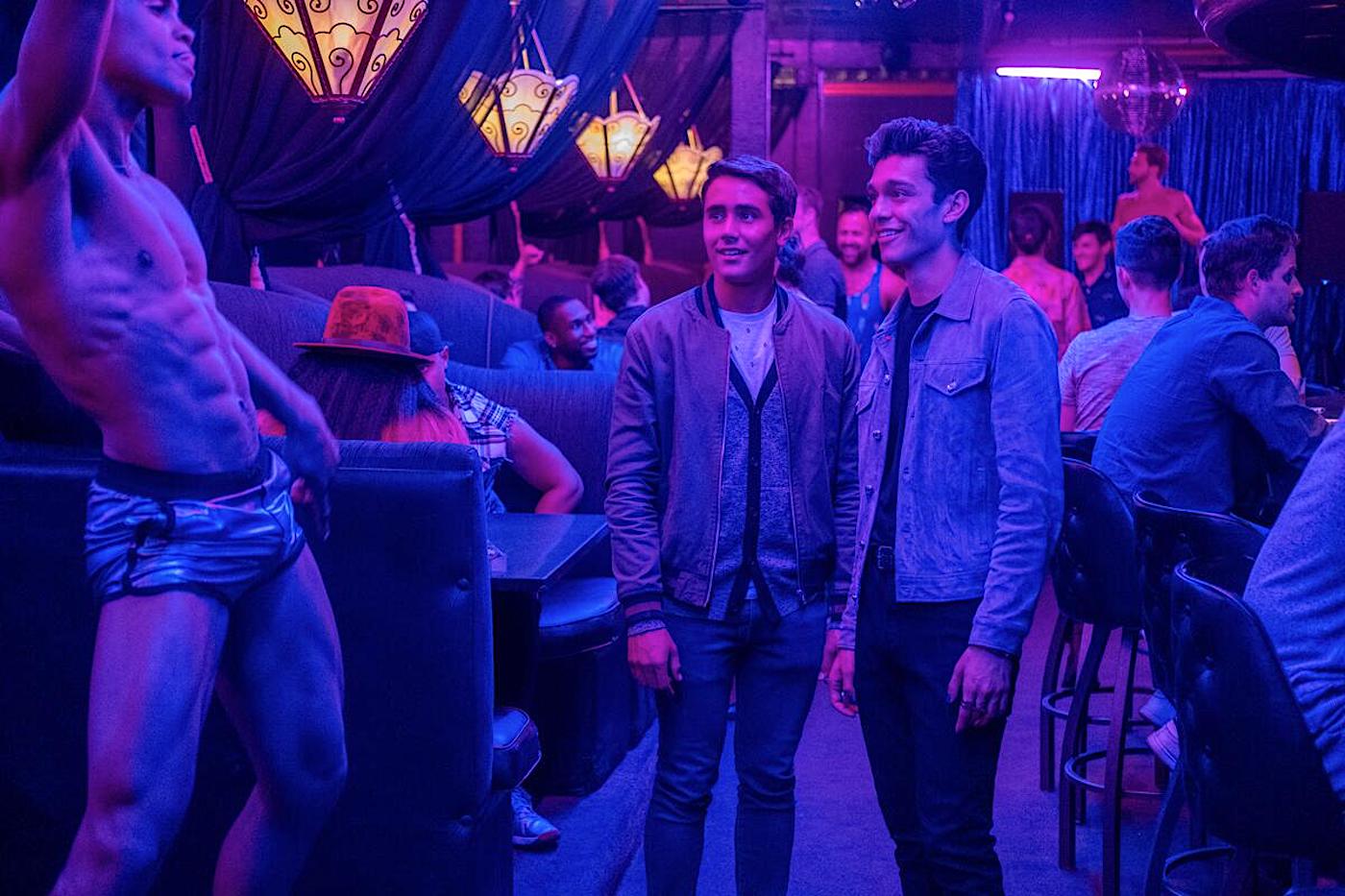
What’s in store for Season 3? “It was recently announced, so we don’t have any specifics to storylines,” Wakayama concludes. “But as Season 2 has accomplished, I expect the audience to get clarity on some of the most anticipated cliffhangers. The exploration of new relationships and challenging our characters is always a goal, and diving into the visuals to represent those areas is something I look forward to tremendously. I want to thank my Local 600 crew for having my back – and Yasu Tanida for his support and guidance throughout my first season.”
Tanida says that because he had a long association with Aptaker and Berger from This Is Us when they asked for a DP reference, he was thrilled to recommend JP, whom he calls “a perfect fit.”
“I talked with the producers and executives at Disney to let them know that JP’s work on Youth and Consequences, shooting a young cast with limited resources, was very impressive,” Tanida recalls.” JP has hopeful energy and wanted an opportunity to prove that he could perform on a bigger canvas. Our relationship – still to this day – is about answering any questions or concerns: from technical stuff to how to put a team together, to collaborating with above-the-line cast and crew. I was in JP’s shoes with my first network series many years ago, so I wanted to let him know how to navigate those challenges and to help put him at ease.”
On a more personal level, Tanida continues, “we are both Japanese American and it always feels good to help advance someone’s career, especially if they haven’t had that opportunity given to them yet. Most importantly, it was about letting JP know that it was fine to be himself. He is uniquely different from every other DP, with his style and ideas, and he should let those qualities shine through. That is, after all, who they hired.”
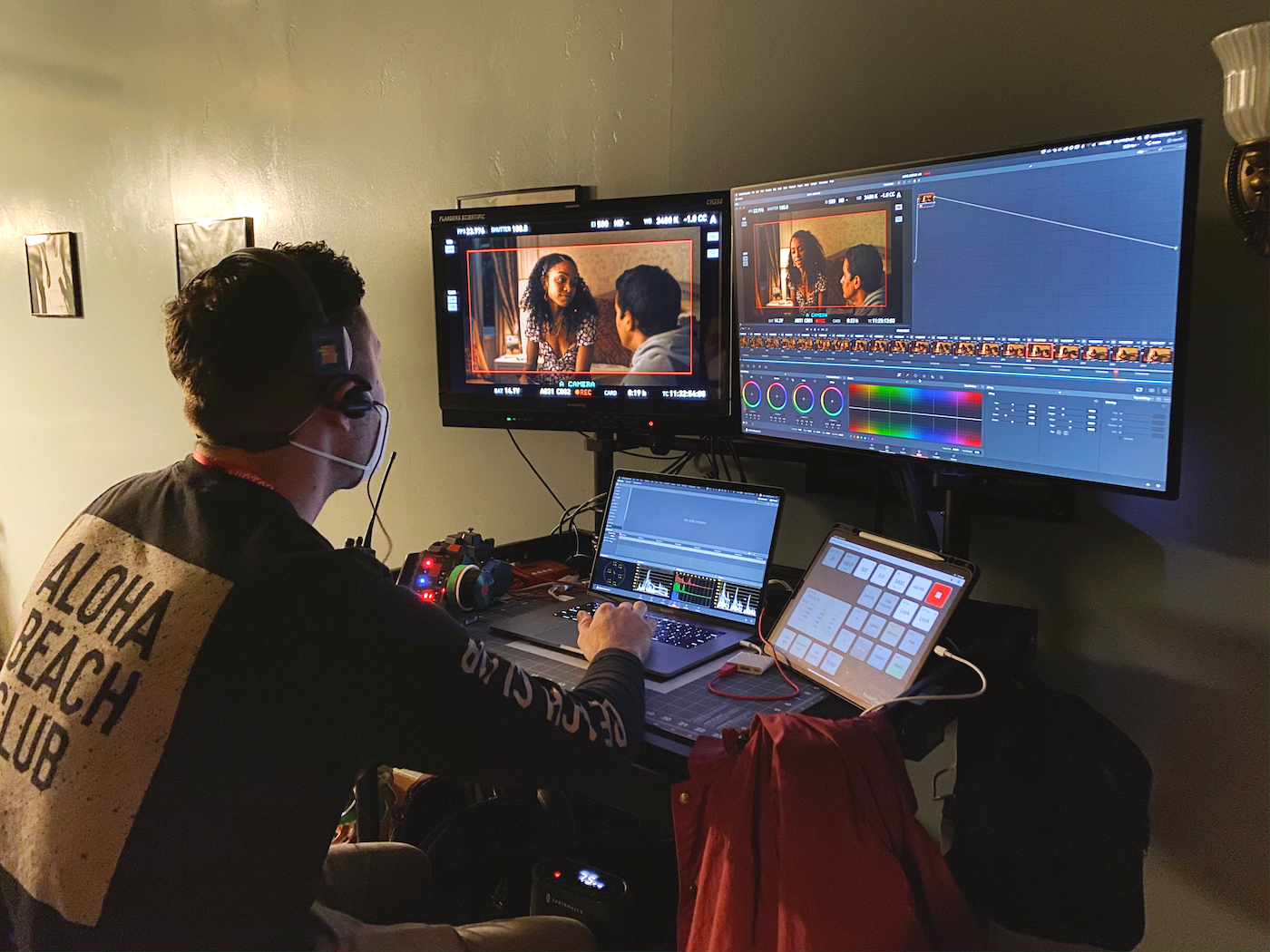
ICG Local 600 Crew: Love, Victor
Director of Photography: John “JP” Wakayama
A-Camera Operator/Steadicam: Joseph B. Hernandez
A-Camera 1st AC: Chris Geukens
A-Camera 2nd AC: Genna Palermo
B-Camera Operators: Yvonne Chu, SOC, Justen Hernandez
B-Camera 1st AC: Brian Wells, Cameron Carey
B-Camera 2nd AC: Loren Azlein
C-Camera Operators: Markus Mentzer, Chris Loh, SOC
C-Camera 1st ACs: Brian Udoff, Toby White
C-Camera 2nd ACs: Steve Marshall, Conner Daniels
Loader: Conner Daniels
Digital Utilities: Onyx Morgan, Morgan Gardiner
Still Photographers: Michael Desmond, Greg Gayne, Patrick Wymore
